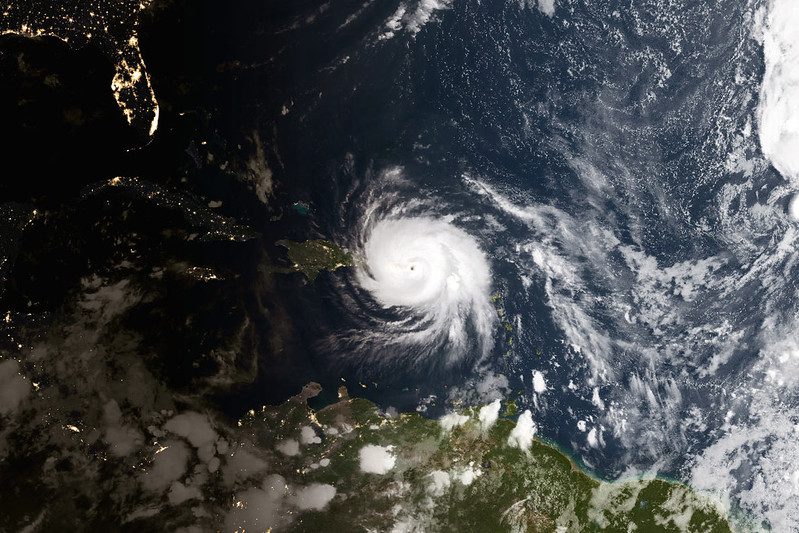With the 28th Conference of Parties (COP) taking place in early December in Dubai, discussing climate agreements takes on greater importance. However, one important institution is conspicuously absent from these talks: the military sector. The U.S. military demanded exemptions from the requirements negotiated during the 1997 Kyoto Protocol. Global militaries also failed to participate in COP21, and they remained exempt from requirements set by the resulting Paris Climate Agreement. In fact, military and conflict emissions were not formally discussed at a COP event until 2022.
The reason for their absence in their rationale is that there are potential national security threats that come from disclosing data. However, because militaries worldwide are major emitters of greenhouse gasses (GHGs), they should be included in these discussions. The following paragraphs will detail what we know of military emissions, why they should be included in climate agreements, and what actions some countries have taken to address the issue. While militaries have historically argued that disclosing emissions presents a national security threat, I would argue that the threat posed by climate risks is greater.
Where are we now, and how do military emissions fit into that?
According to the most recent report from the Intergovernmental Panel on Climate Change (IPCC), global temperatures have already risen to 1.1℃ above pre-industrial levels (the global goal being to limit the rise to 1.5℃). Additionally, gaps in adaptation policies remain, and there is not enough financial backing to ensure these measures occur in a timely manner. On top of that, we have already seen the impacts of climate change in terms of adverse weather, temperature extremes, and continued damage to the environment. Despite the vast majority of countries setting nationally-determined contributions under the Paris Climate Agreement, the world is currently not on track to meet the overarching goals set within it. All of this is to say that serious action must be taken in terms of mitigation and adaptation strategies, and the financing for those strategies, if we are to ensure a habitable planet. This would include targeted emissions reduction policies, robust reporting of emissions, and action plans for adaptation. Warming beyond 1.5℃ will cause intense changes in weather (heat waves, droughts, and floods), rising ocean levels and temperatures, thawing of arctic ice, and species’ extinction beyond what we are already experiencing.
Globally, national militaries make up a significant portion of GHG emissions. The Conflict and Environment Observatory estimates that militaries account for 5.5% of GHG emissions (if they were counted as one country), the fourth largest total carbon footprint worldwide. The majority of these emissions come from fuel usage (in vehicles, aircraft, weapons, etc.) and maintaining military-associated buildings. The largest military emitter, as others have noted is the U.S. Furthermore, many militaries do not report their GHG emissions, as they are not required to do so. The fact that militaries are not included in global climate agreements is a dangerous oversight, considering the large scale of emissions produced.
Militaries, Climate Agreements, and Their Own Actions
As stated, the purported reason for militaries not being subject to the goals of international climate agreements is a national security. The argument is that reporting emissions could be used by adversaries to target locations where militaries are operating, as well as revealing the scale of operations based on the size of emissions. This position was put forward during the process to establish the 1997 Kyoto Protocol, which allowed an exemption for military emissions cuts. In the 2015 Paris Agreement, reporting on military emissions became voluntary, again due to concerns around national security. How this compromise came about is unclear. Emissions reporting is likely to remain discretionary unless addressed directly by global climate agreements. While even voluntary reporting is a step forward in terms of better understanding the scale of these emissions, much of the data produced by countries is both incomplete and not disaggregated. For example, the U.S. military reported its “mobile emissions,” but not other data.
Despite not being party to these agreements, many militaries have begun creating action plans regarding climate change. The largest of these are the U.S. military, and a joint NATO plan. The latter, released in 2022, calls for cutting civilian and military GHG emissions by 45% by 2030, and achieving Net Zero by 2050. The U.S. plan, released in 2021, calls for incorporating climate factors and considerations into decision-making processes, as well as lowering GHG emissions through contractor and supplier disclosures. The 2022 progress report shows that these actions remain in progress. While a good start, the U.S. effort does not appear to go as far as the NATO plan in terms of actually cutting military emissions. Additional actions, including decreasing dependency on oil, are not discussed at all within the U.S. plan. These are imperfect plans that call for some emissions reductions, but do not go far enough. The plans may call for disclosures about GHG emissions from suppliers, but makes no mention of fossil fuels or other emissions from training exercises, building maintenance, or vehicle use. In short, the plan remains somewhat incomplete.
Other military powers do not appear to have gone as far as the U.S. and NATO in terms of addressing the climate crisis. Namely, the Indian military has stated that climate change is a security threat, however, has done little about it since 2015, when it released a joint doctrine. China has also not specifically pledged to curb military emissions, instead focusing on the energy sector. Similarly, the Russian military does not have a climate plan in place, and the government simply requires businesses to report their emissions levels.
While not addressing emissions, some countries are increasing their use of the militaries in the name of “protecting the environment.” For example, the government in Colombia authorized their military to enforce legally protected sections of the Amazon. Environmental activists have criticized this endeavor as an overly militarized approach to mitigating deforestation, especially because it does not seek to lower military GHG emissions. Colombian President Petro has gone even further, calling for the creation of a NATO-like organization of Latin American countries that would have the explicit mandate of protecting the Amazon. To put it simply, this militarized approach may increase GHG emission — and does not account for many other factors in deforestation, including temperature extremes and protection of indigenous communities.
Lastly, many African countries are taking climate action, but none were found to include military GHG emissions in policies or plans. Similarly, many Asian countries have not included military GHG emissions in their national climate policies or plans. The exception to this is Japan, whose Ministry of Defense published their plan in 2021, highlighting that their aim is to cut GHG emissions by 50% by 2030.
What Should Be Done Now?
As stated in a previous paragraph, all militaries combined emit 5.5% of the world’s GHGs, which is the fourth largest. While some countries are working to address their share of GHG emissions associated with the military, it is clearly not adequate. At COP28, the world must begin to include military emissions in their considerations on how best to address the climate crisis. Calls for doing so began in 2021, but it was not formally discussed until 2022. If we follow this trajectory, 2023 must be the year of action. Temperature extremes will cause natural disasters, resource scarcity and associated insecurities will lead to more conflict in more vulnerable areas, rising ocean temperatures and levels threaten nearby communities with flooding and food insecurity, and many others. Since global warming has reached 1.1℃ above pre-industrial levels, and the limit before catastrophic change is 1.5℃, it is imperative that these emissions be curbed.
Ellie Shackleton is a 2023-2024 Emerging Expert at the Forum on the Arms Trade. Her interests include humanitarian disarmament and the environmental impacts of conflict and arms. She currently works as a Program Assistant at a philanthropic organization.
Photo: A man in boots stands in the desert (Adobe stock)



